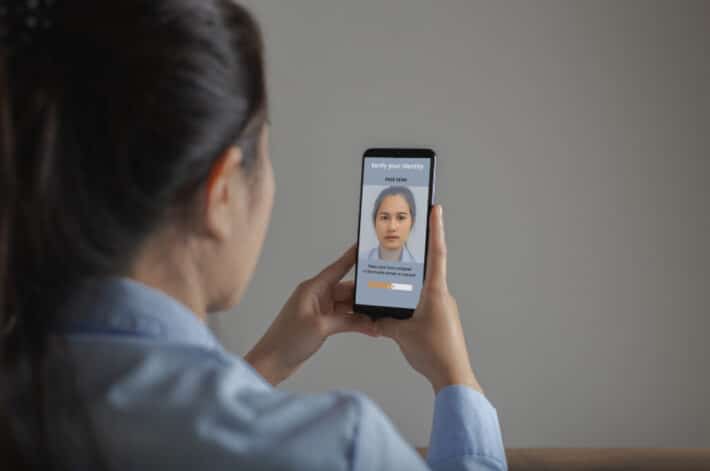Maximizing Security: Implementing Facial Recognition for Identity Verification

Facial recognition technology has become increasingly prevalent in our daily lives, from unlocking our smartphones to airport security checkpoints. But what exactly is facial recognition identity verification and why is it so important?
We will explore the benefits of facial recognition technology, how it works, the different types of facial recognition technology, and its accuracy. We will also discuss the potential risks associated with facial recognition, such as privacy concerns and security breaches.
Delve into the regulations and laws surrounding facial recognition technology, including the General Data Protection Regulation (GDPR) and the California Consumer Privacy Act (CCPA). We will share tips on how facial recognition identity verification can be maximized for security, such as implementing multi-factor authentication and providing user education and awareness.
Join us as we uncover the complexities of facial recognition technology and the measures that can be taken to ensure its security.
What Is Facial Recognition Identity Verification?
Facial recognition identity verification is a cutting-edge technology that utilizes biometric identification to authenticate individuals based on their unique facial features.
This advanced technology works by analyzing key facial features such as the distance between the eyes, the shape of the nose, and the contours of the face to create a unique biometric template for each individual. By using sophisticated algorithms, facial recognition systems can accurately match a person’s identity against stored data, providing a secure and efficient way of verifying individuals.
The significance of facial recognition in enhancing security measures cannot be understated, as it offers a more reliable and convenient method of identity verification compared to traditional methods like passwords or ID cards.
Why Is Facial Recognition Identity Verification Important?
Facial recognition identity verification plays a crucial role in maximizing security measures and safeguarding sensitive data through advanced biometric authentication processes.
By employing facial recognition technology for identity verification, organizations can significantly enhance their security protocols and prevent unauthorized access to sensitive information. This advanced authentication technique not only provides a higher level of security but also helps in maintaining privacy and ensuring cybersecurity. The use of facial recognition adds an extra layer of protection to safeguard against potential cyber threats and unauthorized breaches, making it a valuable asset in today’s digital landscape where data breaches are a growing concern.
What Are the Benefits of Facial Recognition Identity Verification?
Facial recognition identity verification offers numerous benefits, including enhanced security solutions, improved efficiency in user verification, and advanced fraud prevention measures.
By leveraging facial recognition technology, businesses and organizations can fortify their security measures by authenticating individuals based on unique facial features, drastically reducing the risk of unauthorized access. This not only enhances the overall safety of sensitive data but also streamlines user authentication processes, allowing for quick and seamless identity verification.
The accuracy and precision of facial recognition systems help in mitigating fraud risks by detecting and preventing identity theft and unauthorized account access. These capabilities make facial recognition identity verification a pivotal tool in safeguarding important digital assets and ensuring a frictionless user experience.
How Does Facial Recognition Identity Verification Work?
Facial recognition identity verification operates by utilizing advanced biometric technology to authenticate individuals through an intricate authentication process based on facial features.
This technology works by capturing a live or stored image of a person’s face, which is then analyzed using algorithms to detect unique facial characteristics such as the distance between eyes, nose shape, and jawline.
These key features are converted into a mathematical representation known as a faceprint, which is then compared against a database of enrolled faceprints for identification.
The system calculates a similarity score to determine the level of similarity between the captured faceprint and the stored templates, thus granting or denying access based on the result.
What Are the Types of Facial Recognition Technology?
Facial recognition technology encompasses various types, such as facial matching systems, which are integrated into security solutions to enhance access control and surveillance capabilities.
These facial matching systems use advanced algorithms to analyze unique facial features and match them against a database of known identities. Integrated with security systems, they offer a high level of accuracy in verifying individuals’ identities, allowing for secure access to restricted areas in businesses, institutions, and public spaces. This technology aids in preventing unauthorized entries and enhancing overall safety measures.
By combining facial recognition with other security measures like access cards or PIN codes, organizations can create multi-layered security protocols for comprehensive protection.
How Accurate Is Facial Recognition Technology?
Facial recognition technology demonstrates high accuracy levels in threat detection scenarios, leveraging facial databases to enhance identification precision and security protocols.
It has been proven that the integration of facial recognition technology in security systems has significantly improved the ability to identify potential threats with greater accuracy. By cross-referencing live images with databases of known individuals, security personnel can swiftly pinpoint individuals of interest, thereby preventing security breaches.
This advanced technology has revolutionized security measures in sensitive environments like airports and government facilities, creating a robust defense system against unauthorized access or suspicious activities. The continuous advancements in facial recognition algorithms have bolstered the reliability and efficiency of security protocols, making it an indispensable tool in maintaining public safety and security.
What Are the Potential Risks of Facial Recognition Identity Verification?
Despite its benefits, facial recognition identity verification poses risks related to privacy concerns, potential security breaches, and the heightened risk of identity theft.
These risks stem from the collection and storage of sensitive biometric data, creating opportunities for unauthorized access and misuse. Privacy advocates warn that the widespread adoption of facial recognition technology could lead to increased surveillance and erode personal freedoms. In addition, security experts highlight the vulnerability of facial recognition systems to manipulation and hacking, putting individuals at risk of identity theft and fraud. As organizations grapple with implementing facial recognition for identity verification, finding a balance between convenience and safeguarding privacy remains a significant challenge.
Privacy Concerns
Privacy concerns arise in facial recognition applications due to the necessity of maintaining user privacy standards and ensuring compliance with security protocols.
Facial recognition technology has grown in popularity due to its convenience and efficiency in identifying individuals, whether for unlocking smartphones or enhancing security measures in public spaces. The use of this technology raises ethical concerns regarding personal privacy and data protection.
Businesses and organizations must prioritize the implementation of robust data security measures to safeguard sensitive information collected through facial recognition systems. By ensuring user consent, data encryption, and strict access controls, companies can mitigate privacy risks associated with facial recognition technology and build trust with users.
Biases and Inaccuracies
Biases and inaccuracies can emerge in facial recognition systems, highlighting the need for precise facial analysis techniques to minimize errors and enhance accuracy.
The challenges of biases in facial recognition technology can lead to issues such as misidentification and skewed outcomes. Inaccurate analysis methods may disproportionately affect certain demographics, perpetuating systemic biases.
By adopting advanced facial analysis techniques like 3D modeling and skin texture analysis, the system’s precision can be significantly improved. Ensuring diversity in the datasets used for training can help reduce bias and promote fairness in facial recognition applications.
Security Breaches
Security breaches pose a significant risk in facial recognition systems, underscoring the critical need for robust data security measures and advanced threat detection protocols.
Implementing strong data encryption techniques is essential to safeguard the sensitive information collected by facial recognition systems. By encrypting data at rest and in transit, organizations can prevent unauthorized access and maintain the privacy of individuals’ biometric data.
Real-time monitoring tools and anomaly detection algorithms play a crucial role in identifying and mitigating potential security threats before they escalate. Proactive measures such as regular security audits and penetration testing are also vital to ensure that facial recognition systems remain resilient against evolving cyber threats.
What Are the Regulations and Laws Surrounding Facial Recognition Technology?
Regulations and laws governing facial recognition technology, such as the General Data Protection Regulation (GDPR) and the California Consumer Privacy Act (CCPA), set stringent security standards and compliance requirements.
These regulations are vital in ensuring that companies handling facial recognition technology prioritize data protection and user privacy. By adhering to these laws, businesses can enhance trust with consumers and mitigate the risk of potential data breaches. Compliance also helps in fostering a culture of responsible data management and accountability within organizations. With the ever-evolving landscape of cybersecurity threats, following these regulations is crucial to safeguarding sensitive information and maintaining a reputable image in the industry.
General Data Protection Regulation (GDPR)
The General Data Protection Regulation (GDPR) imposes strict data protection requirements on facial recognition technologies to enhance identity management and safeguard personal information.
By mandating compliance with GDPR standards, facial recognition technology providers are compelled to prioritize user consent, data minimization, and transparency in their operations. This not only ensures that individuals have control over their personal data but also reinforces the need for robust security measures to prevent unauthorized access or misuse. GDPR’s emphasis on accountability means that organizations must demonstrate responsible data handling practices, leading to a more ethical and trustworthy use of facial recognition systems.
California Consumer Privacy Act (CCPA)
The California Consumer Privacy Act (CCPA) mandates stringent identity validation processes and security policies for facial recognition systems to ensure compliance and protect user data.
These requirements outline the necessity for companies using facial recognition technology to establish robust mechanisms for verifying the identity of individuals before accessing their data. By implementing multi-factor authentication and biometric verification methods, organizations can enhance the security of their systems and prevent unauthorized access. The CCPA emphasizes the need for strict security policies that govern the collection, storage, and sharing of facial recognition data to safeguard against breaches and unauthorized disclosures.
Biometric Information Privacy Act (BIPA)
The Biometric Information Privacy Act (BIPA) enforces stringent biometric security standards and secure access protocols in facial recognition systems to protect sensitive biometric data.
This legislation aims to ensure that businesses and organizations handling biometric data adhere to strict security measures, including encryption and multi-factor authentication, to safeguard individuals’ unique biometric information. By requiring entities to establish robust security protocols and obtain explicit consent before collecting or storing biometric data, the BIPA works to prevent unauthorized access and potential misuse of sensitive personal information. These stringent regulations serve to bolster consumer confidence in the use of facial recognition technology while consistently upholding the privacy and security of individuals’ biometric identifiers.
How Can Facial Recognition Identity Verification Be Maximized for Security?
Organizations can optimize facial recognition identity verification for maximum security by implementing effective risk management strategies and enhancing security measures to mitigate potential threats.
- One key strategy to enhance the security of facial recognition systems is through continuous monitoring and updating of the algorithms to adapt to evolving threats.
- The organization should conduct regular vulnerability assessments to identify and address any weaknesses in the system.
- Implementing multi-factor authentication can add an extra layer of security by requiring additional verification steps beyond just facial recognition.
- Ensuring data encryption and secure storage of biometric information also plays a crucial role in safeguarding user identities and preventing unauthorized access.
Multi-Factor Authentication
Implementing multi-factor authentication alongside facial recognition technology enhances user verification processes and strengthens security protocols for secure access control.
This powerful combination adds an extra layer of protection by requiring users to provide two or more forms of verification, such as a password and a facial scan. This not only makes it harder for unauthorized users to gain access but also significantly reduces the risk of data breaches and identity theft. By incorporating facial recognition technology, organizations can ensure that only authorized individuals are able to unlock devices or access sensitive information, boosting overall security measures.
Regular Software Updates and Maintenance
Regular software updates and maintenance are essential for ensuring the effective implementation of facial recognition technology and keeping security measures up to date against emerging threats.
By regularly updating software systems, the facial recognition technology can adapt to new challenges in cybersecurity and maintain its accuracy and efficiency. Without implementing these updates, malicious actors could exploit potential vulnerabilities in the system to compromise security measures. Staying on top of software maintenance allows for the implementation of enhanced security protocols, enhancing overall system defenses and protecting sensitive data from unauthorized access.
User Education and Awareness
Educating users and enhancing awareness about facial recognition technology are crucial for promoting user privacy, ensuring security compliance, and fostering a secure environment for data processing.
By educating users on how organizations capture, store, and process their facial data, organizations can empower them to make informed decisions about their privacy settings. Awareness initiatives also play a key role in highlighting the potential risks and vulnerabilities associated with facial recognition technology, prompting users to take necessary precautions. Fostering a culture of transparency and accountability around data handling creates a foundation for compliance with security regulations and builds trust between users and service providers.
Frequently Asked Questions
What are facial recognition identity verification measures and why are they important?
Facial recognition identity verification measures are security methods that use facial recognition technology to confirm a person’s identity. They are important because they provide an extra layer of security and help prevent unauthorized access to sensitive information or locations.
How does facial recognition technology work in identity verification?
Facial recognition technology uses algorithms and biometric data to map and analyze a person’s facial features, such as the distance between the eyes, shape of the jawline, and placement of facial hair. A system compares these unique features to a pre-existing database to verify the person’s identity.
What are the benefits of using facial recognition identity verification measures?
Facial recognition identity verification measures have several benefits, including improved accuracy and efficiency compared to traditional methods, reduced risk of fraud and identity theft, and a more seamless and user-friendly experience for individuals.
Are there any potential concerns or drawbacks to using facial recognition identity verification measures?
While facial recognition technology is constantly improving, there are still some concerns about its accuracy and potential biases. There are also privacy concerns surrounding the collection and storage of biometric data. It is important for organizations to address and mitigate these concerns when implementing facial recognition identity verification measures.
Can facial recognition technology be fooled or tricked?
Facial recognition technology has advanced significantly in recent years, making it difficult to fool or trick. However, technology can be deceived by things like extreme changes in appearance (e.g. plastic surgery), poor lighting or image quality, or attempts to conceal or alter facial features.
How can organizations maximize security when using facial recognition identity verification measures?
To maximize security, organizations should combine facial recognition technology with other forms of identity verification, such as passwords or PINs. They should also regularly update their database and algorithms to stay ahead of potential security breaches and continue to improve accuracy and efficiency.



